Kitchen Tools and Heritage
The cake pans and spoons and bowls and rolling pins we use to cook can provide us as much comfort and connection as the recipes we're making
I may not dig my mom’s old copper chafing dish out of the cupboard all that often, but when I do it means the world to me to be able to serve her recipe for chile con queso in the same chafing dish she always served it in—as she did countless times for parties and gatherings at our house. And I still have the little recipe booklet that came with it, including mom’s note to me in the front. Every time I use that chafing dish or other items in my kitchen that were once in hers, it’s a beautiful reminder that it’s not only recipes that provide connection to our family and our past, that kitchen tools we use can do very much the same.
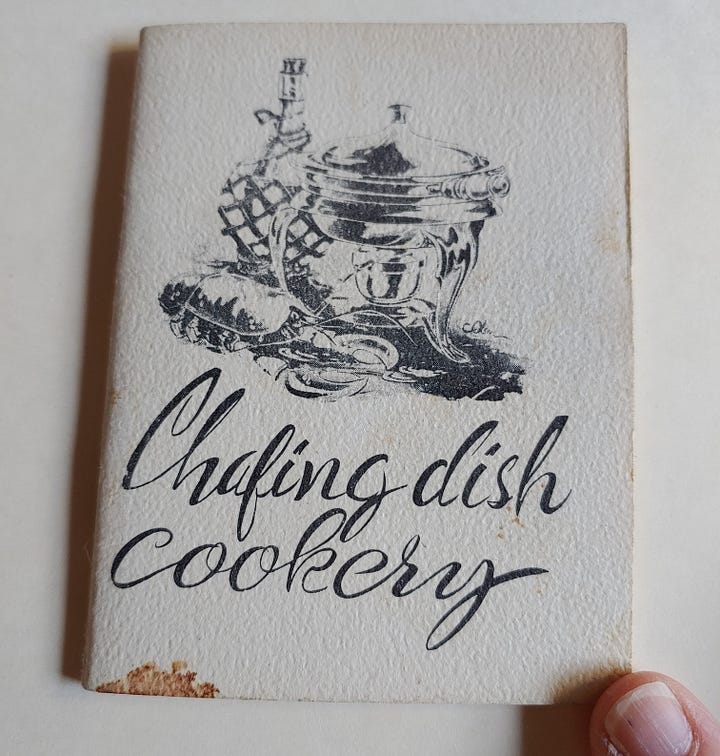

And her scallops shells. I love having them for occasions such as Thanksgiving a couple of years ago when they were perfect for one of the courses. One day soon I need to make this recipe mom flagged with a question for me, “Does this sound Brittanish? It does sound good!” On the back it specifies to “serve with large platter buttered green & white asparagus.” Sounds divine!
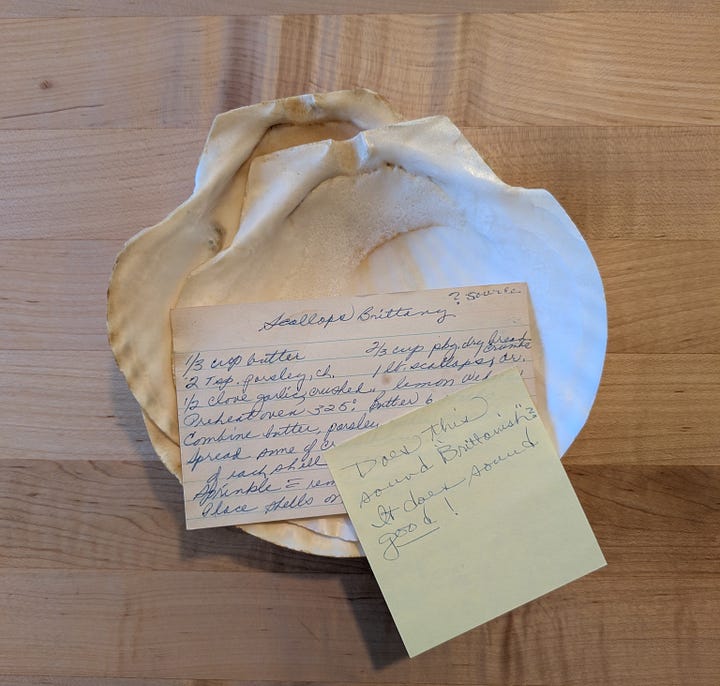
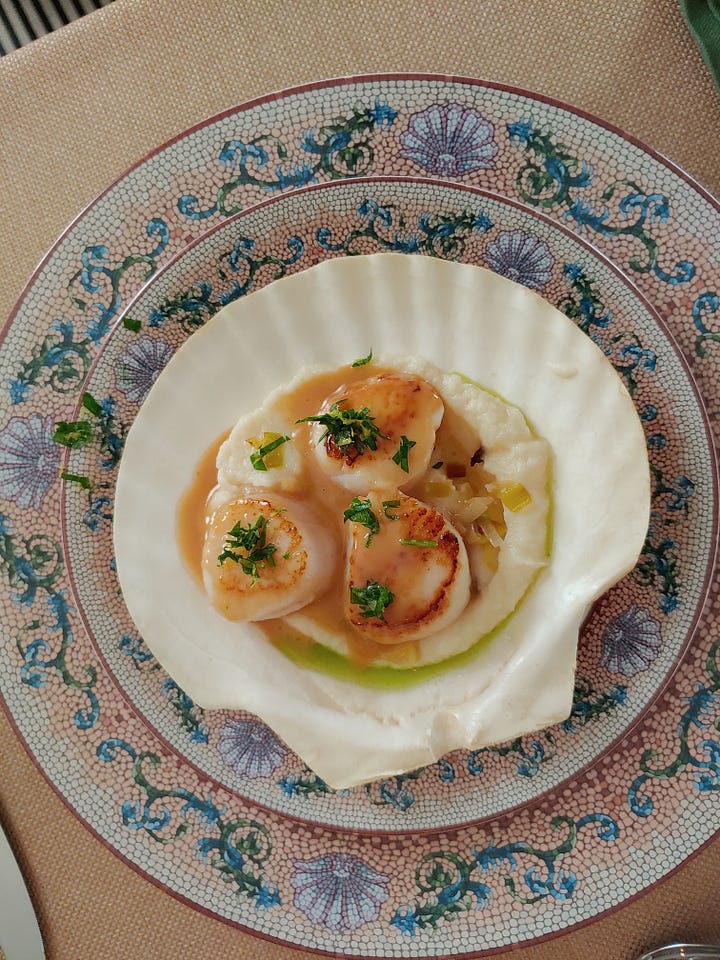
A couple other pieces I keep for the pure nostalgia: her hand-crank grinder that she used for her (but really Ocean Spray’s) cranberry relish, and the spritz cookie press. Maybe I’ll be motivated to make cookies one of these days, but I’ll stick with my KitchenAid attachment for grinding berries and oranges once a year.
Used far more often is this ancient Revere Ware pan. I pull it out a few times a week, maybe adding a steamer basket to steam vegetables, or using it to make a quick little batch of popcorn. And I think of my mom every single time.
I’m sure many of you have at least an item or two in your kitchen that serves as a tangible link to your past and beloved cooking memories. I’d love to hear some of your stories in the comments below!
Here are some other examples that have crossed my radar in recent weeks:
An article in the Seattle Times shared a chef’s connection to his Portuguese grandmother through her copper cataplana pan that hangs in his kitchen and her cooking that inspires what he serves in his restaurant. I may not have any Portuguese roots, but I do happen to have a cataplana pan that I haven’t used in years. When I soon make the recipe shared in that piece, it’ll be with a bit of added appreciation for the legacy such a dish (both the pan and the recipe made in it) can have.
My friend Hsiao-Ching Chou and her teenage daughter Meilee Chou Riddle just co-authored a heartwarming celebration of holidays, tradition, and family with Feasts of Good Fortune. Among the great stories is one about two special woks Hsiao-Ching bought years ago: one she has been using and the other tucked away to be given to Meilee—which she did recently. Meilee’s wok is now building up its own patina and its own trove of meals and memories to carry through many years.
Another recent mother-daughter cookbook by Patricia Tanumihardja and her mom Juliana Evari Suparman puts a cherished tool at the center of things with Mortar & Pestle. I haven’t seen the book yet, but heard the two in this interview on KCRW’s Good Food recently—which starts off, naturally enough, about Juliana’s beloved mortar and pestle. It happens to reside, now, in one of the Smithsonian museums in Washington, DC.
One last book I recently heard about is more fully committed to the rich, meaningful, emotional connections we may have with specific kitchen tools. The only trick is needing to be patient, as Bee Wilson’s The Heart-Shaped Tin: Love, Loss and Kitchen Objects won’t be released in the US until early November (its UK release is early May). It’s going to be hard to wait that long, but I trust it’s going to be worth the wait.




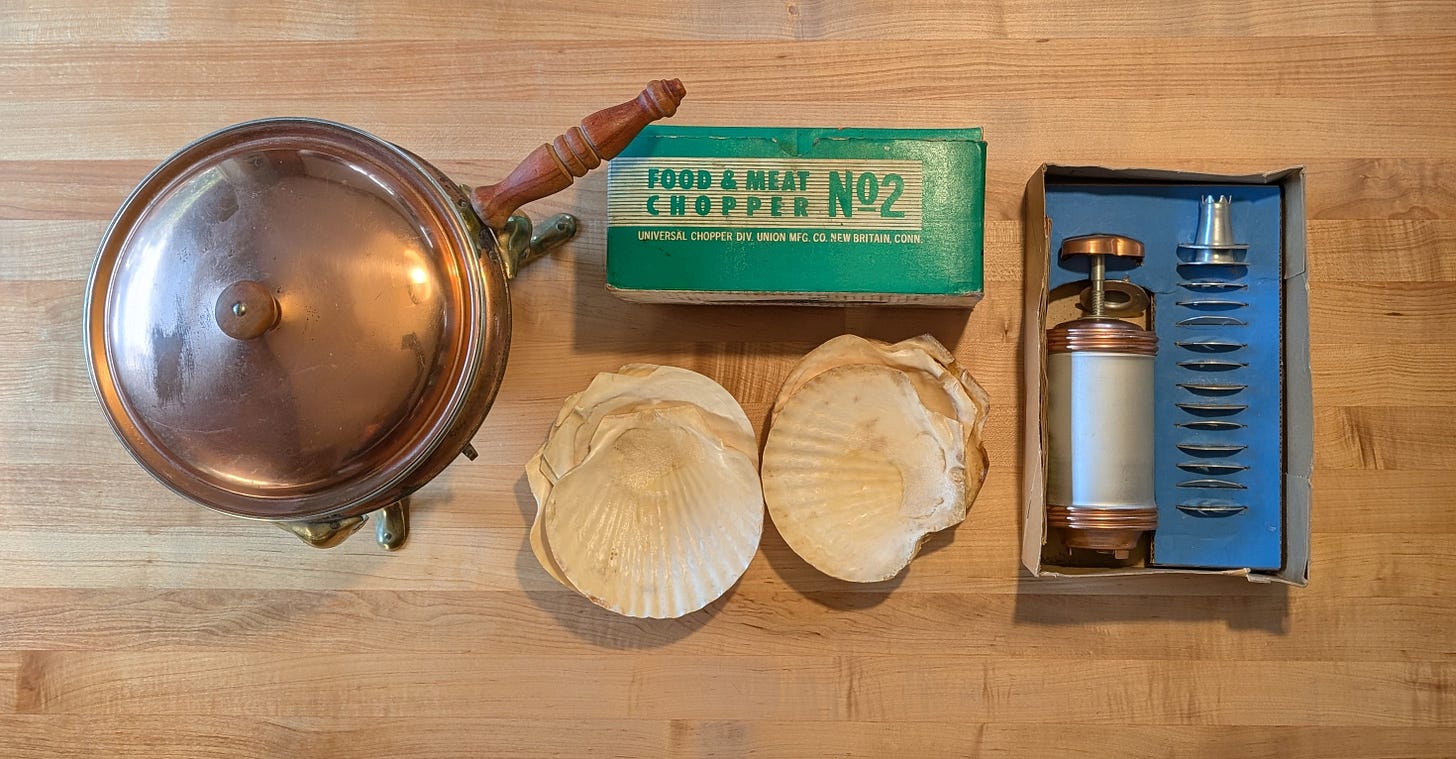
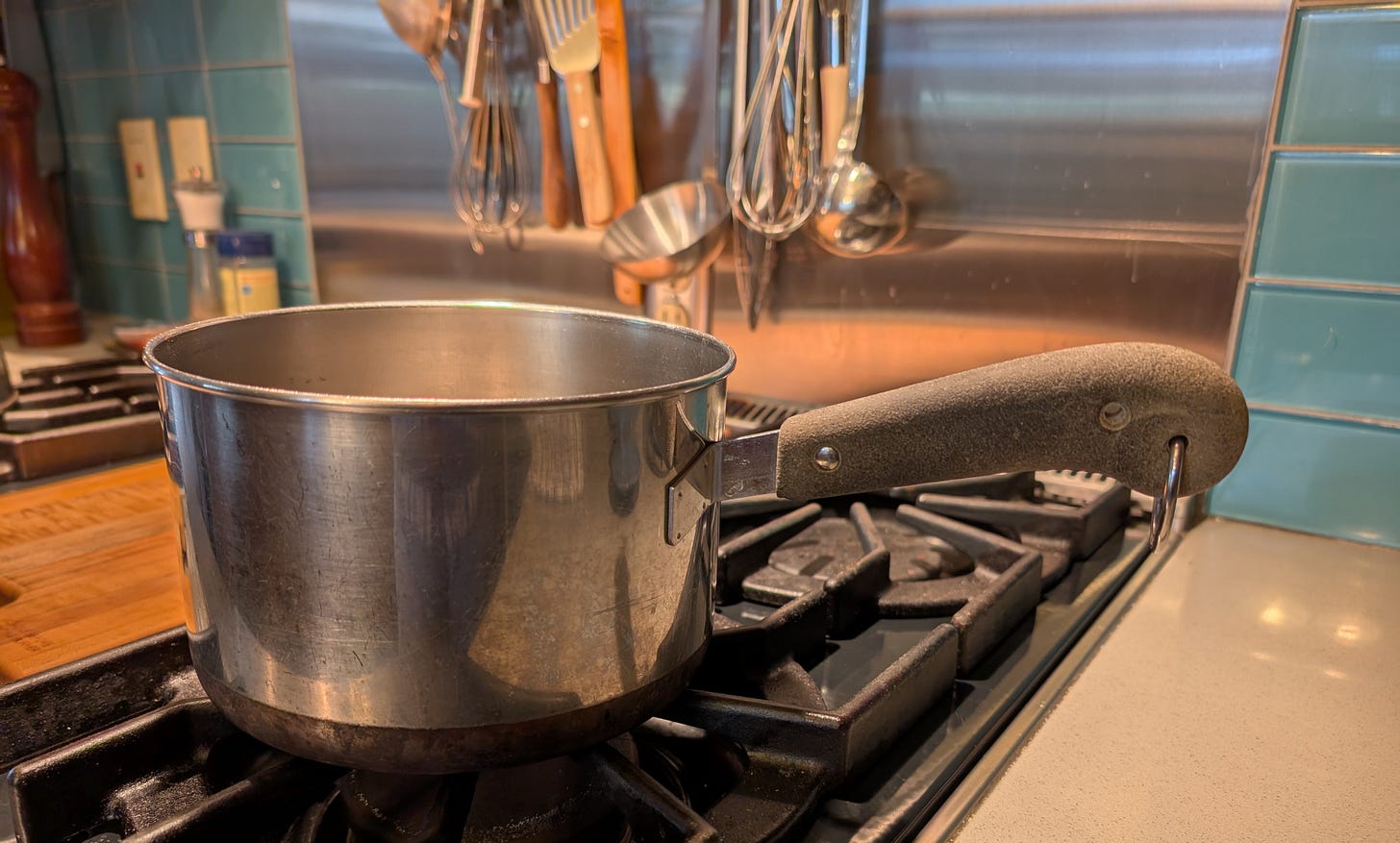
Your post brings back so many memories. I still use the Tangshan wok that my mother hand-picked for me over 40 years ago. Gives the best smoky flash-fries ever.
"[...] it’s not only recipes that provide connection to our family and our past, that kitchen tools we use can do very much the same." This is such a lovely thought!
I have my grandmother's colander, which is not particularly unique in and of itself (or even terribly useful, being all banged up and wonky), but it serves as a lovely little memory-prompt of the times I sat with her on a little stool while she made dinner and saw it hanging on the turquoise-colored kitchen wall.